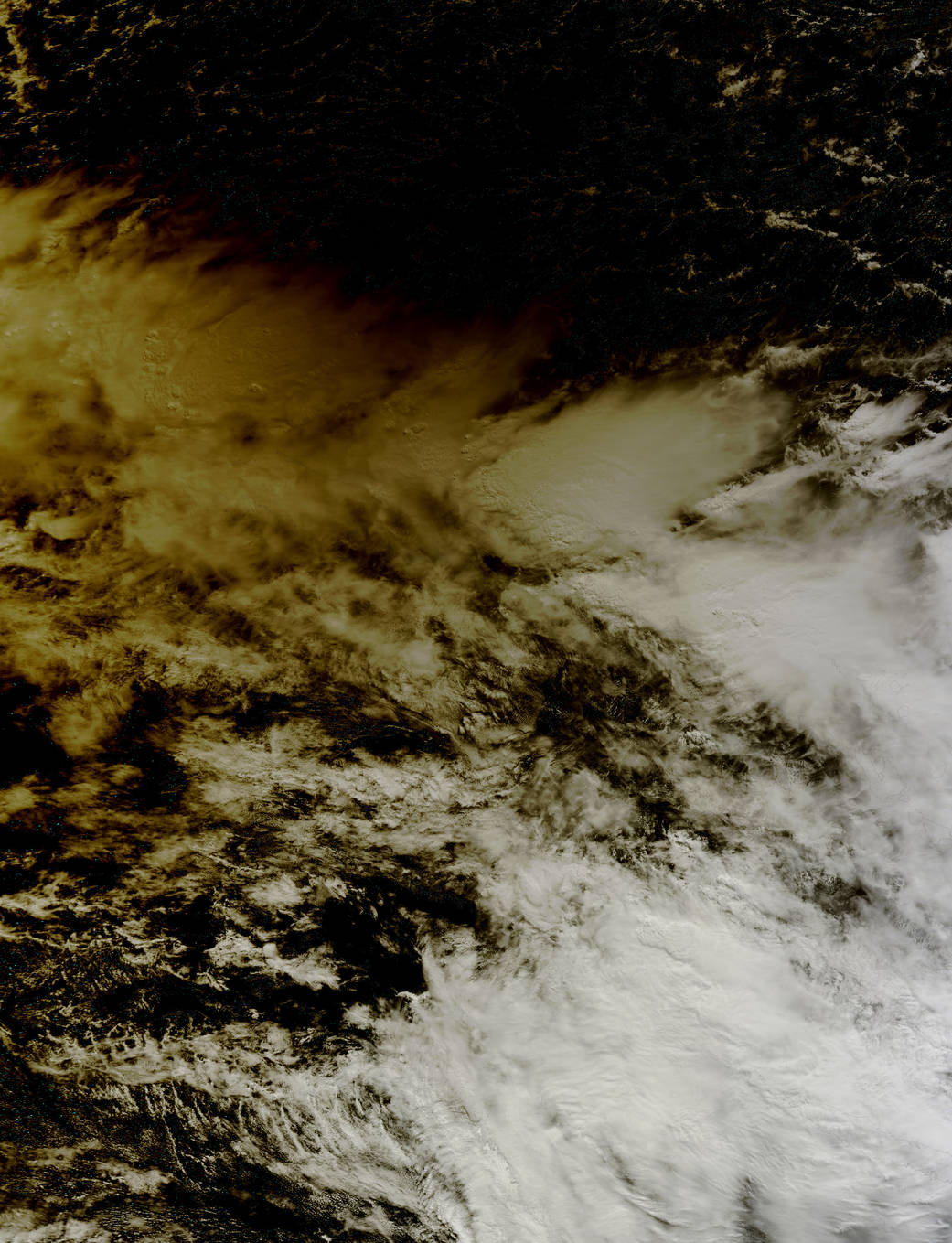On May 10, 2013, the sun experienced what’s called an annular eclipse – when the moon moves directly in front of the sun, but doesn’t obscure it completely. This leaves a thin, fiery ring, the annulus, visible around the outside. This eclipse was only visible from the South Pacific, along an approximately 100-mile-wide track that traverses Australia, Papua New Guinea, the Solomon Islands and the Gilbert Islands. Other areas in Australia and Indonesia saw a partial eclipse, in which the moon blocks a much smaller region of the sun.
NASA’s Terra satellite didn’t observe the eclipse directly, but it did see the moon’s shadow darkening the region northeast of Australia including the Solomon Islands. This image was captured by Terra’s Moderate Resolution Imaging Spectroradiometer on May 9, 2013, at 23:30 UTC (7:30 p.m. EDT).Credit: NASA/Goddard/MODIS Rapid Response Team› More about the May 2013 annular eclipse
1 min read




























